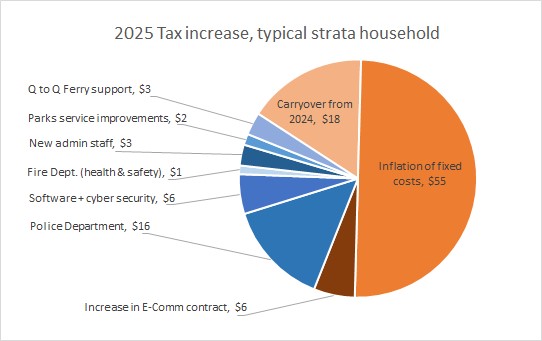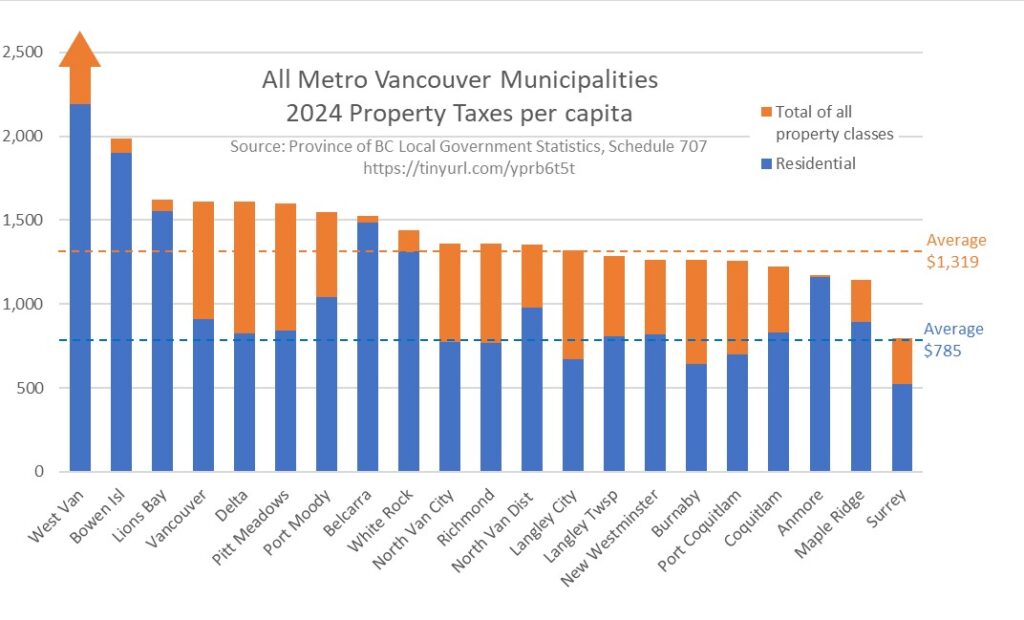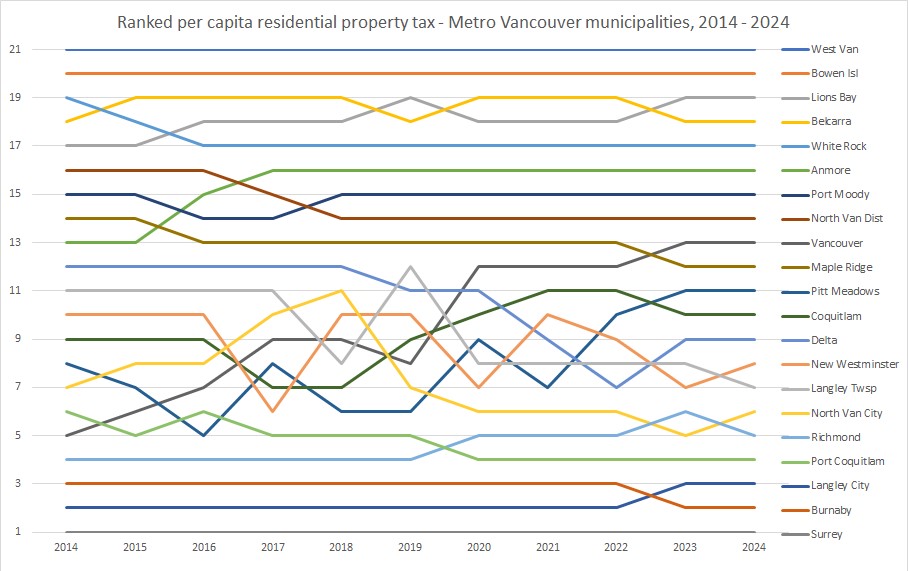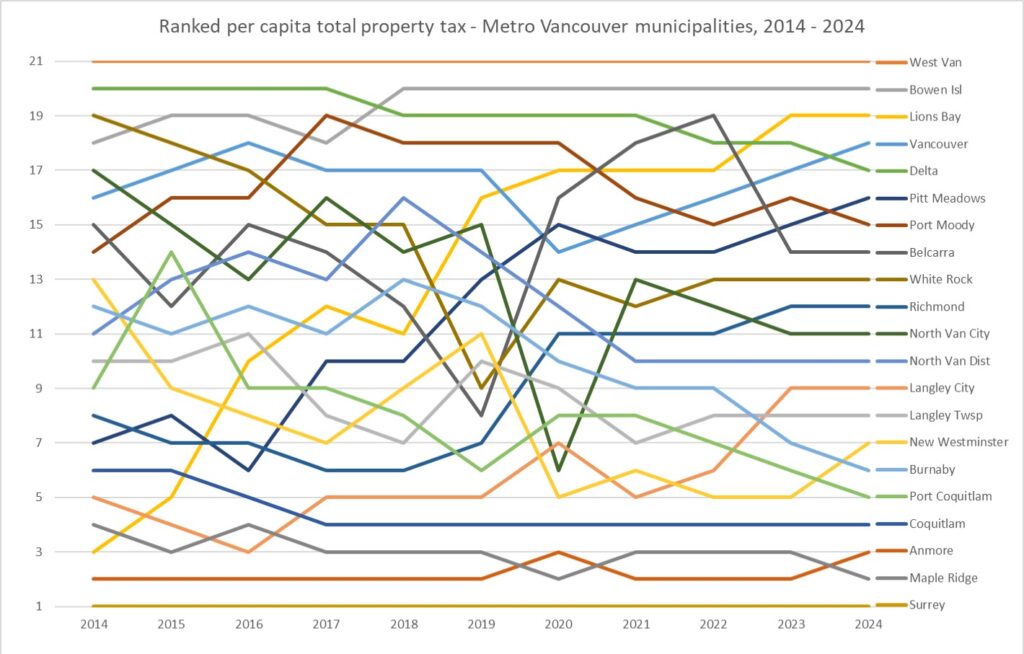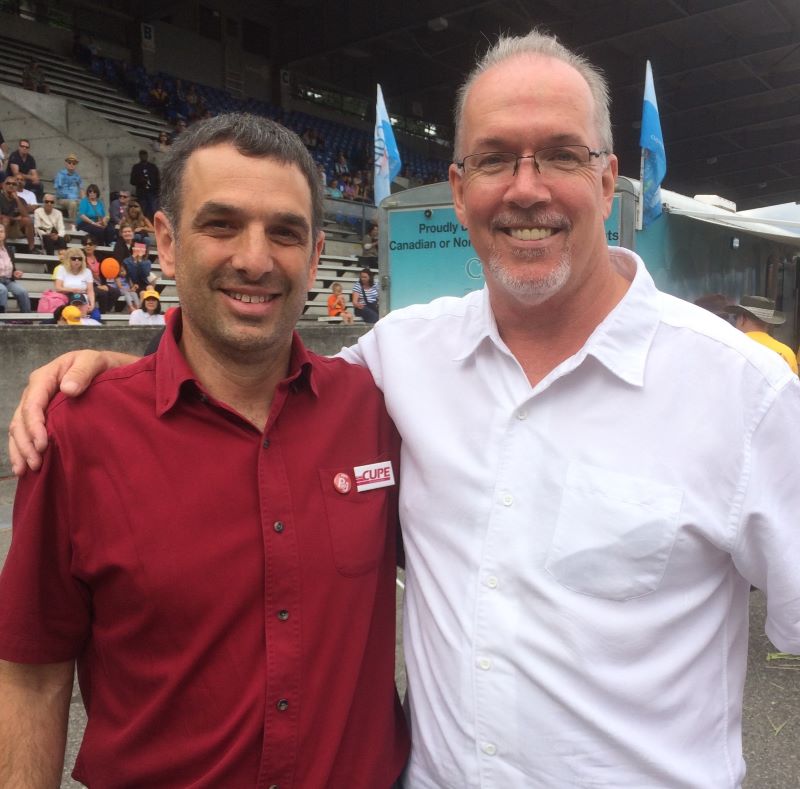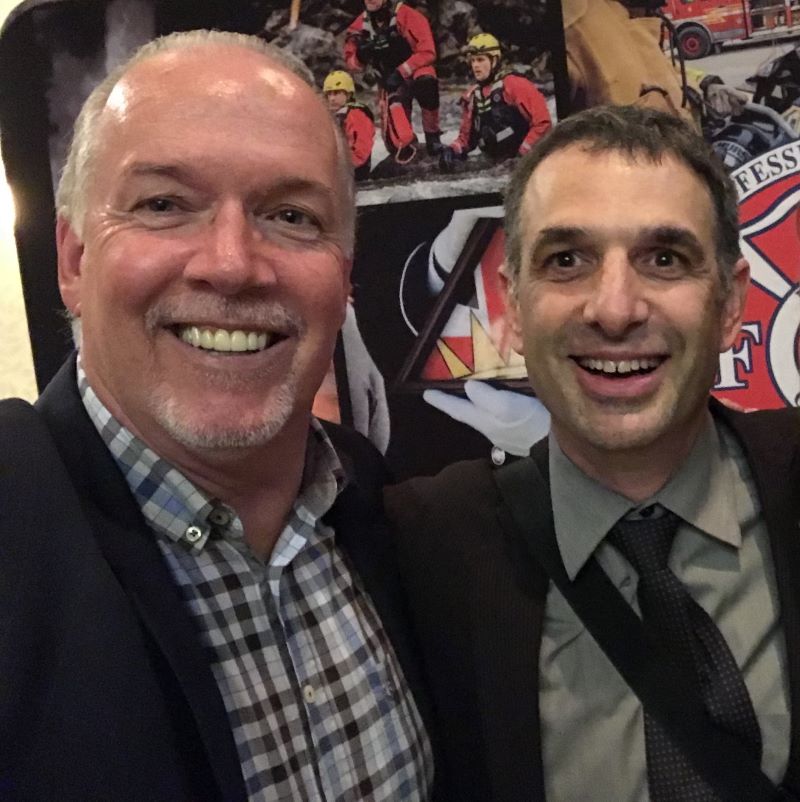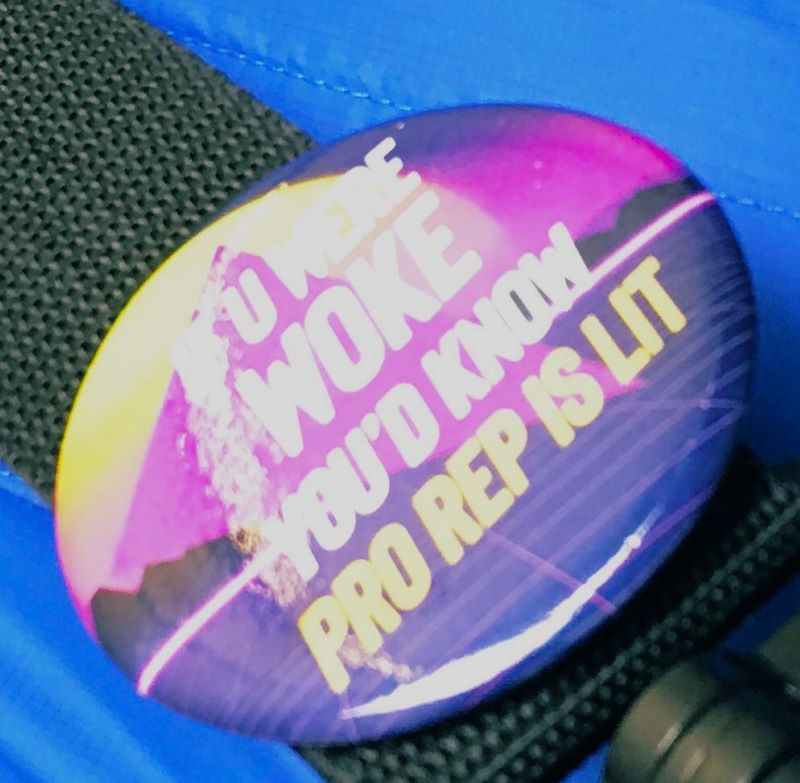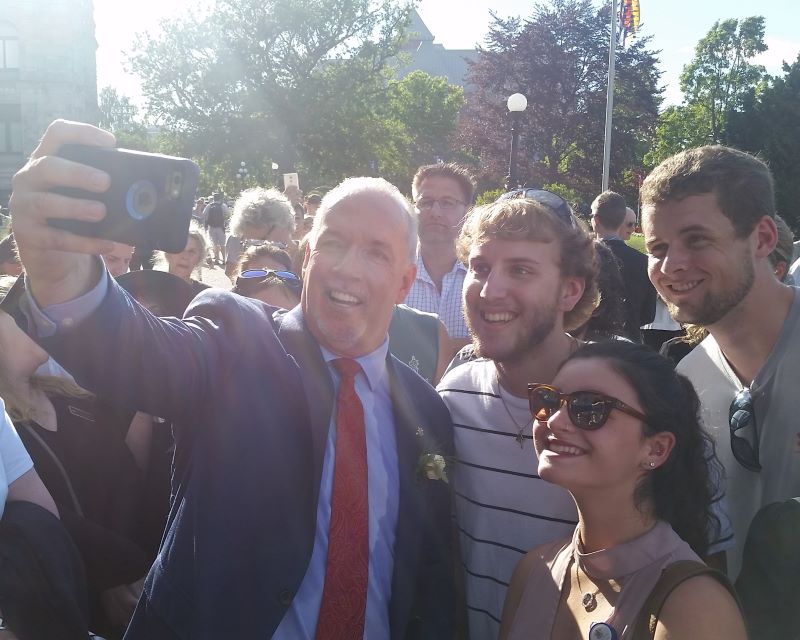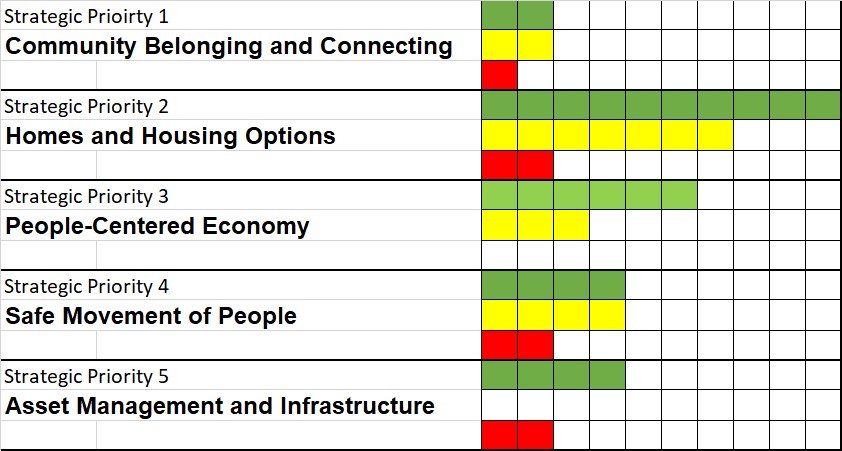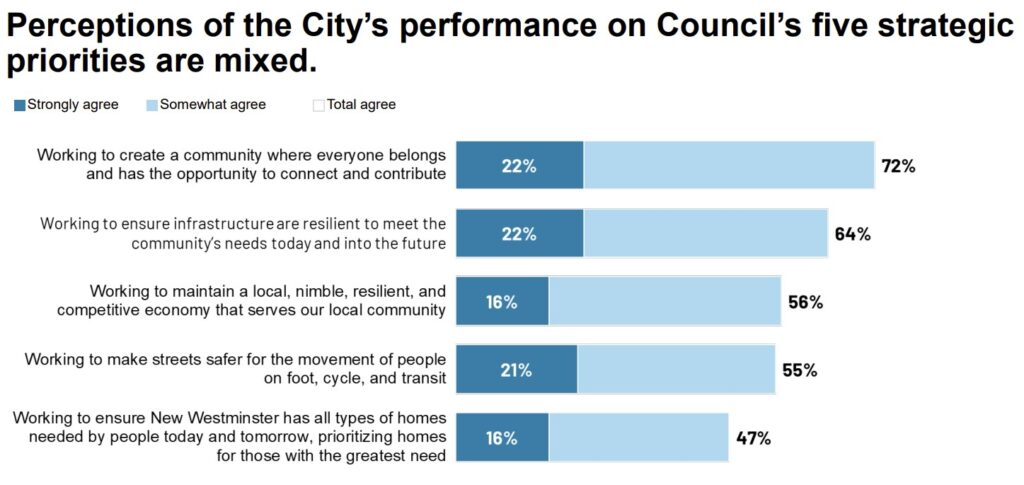Our Monday meeting started with the now-unusual process of a Public Hearing. These are less common now (we used to have one a month or so in the before times) mostly because they are largely illegal now. Where they used to be required for most rezoning, provincial regulations now forbid them if the project is residential and the project is aligned with the Official Community Plan. The two projects on this Agenda were OCP amendments:
Official Community Plan Bylaw No. 7925, 2017, Amendment Bylaw (1135 Salter Street) No. 8454, 2024 and Zoning Bylaw No. 6680, 2001, Amendment Bylaw (1135 Salter Street) No. 8455, 2024
The owner of this lot in the western part of Queensborough wants to build a 45-unit townhouse complex, similar to surrounding townhouse developments, along with a 1000sqm park dedication for part of the lot. This requires an OCP amendment, a rezoning, and a Development Variance Permit for tandem parking.
The application has spent more than a year going through design review and consultation with the community, stakeholders, and First Nations. At request of the latter, the developer hired and had an archeological assessment completed. The community engagement had limited response with tacit approval, Design Panel review resulted in some changes to the project, and Advisory Planning Commission expressed support.
The Public Hearing received a single letter of concern about use of the park dedication, and one person called in to the Public Hearing to ask about property impacts to adjacent properties during construction. Council moved to give these Bylaw amendments Third Reading (effectively approving the project)
Official Community Plan Bylaw No. 7925, 2017, Amendment Bylaw (1084 Tanaka Court) No. 8483, 2024 and Zoning Bylaw No. 6680, 2001, Amendment Bylaw (1084 Tanaka Court) No. 8484, 2024
The owner of this lot in Queensborough wants to do a OCP amendment and rezoning from a Special CD zoning supporting commercial and assembly hall use (brought in a couple of years ago) back to Light Industrial like the surrounding properties. There is no specific development yet proposed. There was community consultation and consult with stakeholders and First Nations, and the Advisory Planning Commission approved the change.
We received no correspondence, and no-one came to speak to the Public Hearing. Council moved to give these Bylaw amendments Third Reading (effectively approving the project)
We then approved the following items On Consent
Construction Noise Bylaw Exemption Request: 2126 Seventh Avenue (22nd Street SkyTrain Station)
TransLink is needing to do renovations of the 22nd Street Skytrain stations to increase train capacity, and some of the work cannot be done while the track is being used, so they need a construction noise bylaw exemption to permit the work.
Zoning Bylaw No. 6680, 2001, Amendment Bylaw (Non-Profit Housing Development) No. 8502, 2025
Council discussed this at length in workshop last week, and these are the resultant Bylaws to make what Council discussed into a reality. In short, the City is going to “pre-zone” all RM (Residential Multi-family) properties in the City to permit affordable housing to be built as-of-right on sites owned by registered non-profit housing providers or non-profit housing co-operatives, assuming the project meets some specific criteria (no more than six storeys, vehicle access, etc.). This removes one delay and uncertainty for non-profit affordable housing providers and accelerates the approval process. Acceleration is the key word here, as this is part of the Housing Accelerator Fund program for which the City has received federal government funding support.
This funding also allowed us to perform a multi-faceted Public engagement process, through Be Heard New West, though direct interviews with community non-profit housing providers, a community discussion with open to all interested members of the community. Overall, there was support for this measure, and Council has now given it Third Reading.
Zoning Bylaw Text Amendment: 805 Boyd Street – Bylaw for First, Second, and Third Readings
The owner of Queensborough Landing is looking to broaden the available types of retail at the site to include amusement arcades, animal boarding, car washing establishments, commercial schools, delivery and express facilities, food and beverage manufacturing which is associated with a lounge endorsement area or retail component, second hand stores, and trade schools. Times change and the types of uses for retail spaces should be able to change along with them, and there are no specific concerns related to the suite of services that the proponent is proposing here.
We then worked on these items Removed from Consent for discussion:
2024 Seven Bold Steps and Environment Progress Report
This report is an update on our Seven Bold Step framework on Climate Action, and a bit of check-in on how progress is being made towards our 2023 targets. And it’s a bit of a mixed bag:
Step 1: Carbon-Free Corporation: 30% reduction in emissions, work to do, but on track;
Step 2: Car light: need 60%, at 35.5% – we have much work to do – and need senior government support;
Step 3: Carbon-Free Homes: Are bringing in Zero Carbon step code in an aggressive way, and though existing building stock reductions are hard to measure, this is definitely an area of keen interest for the City and the Province;
Step 4: Pollution free Vehicles: We are not likely to make this target, but accelerating in uptake or electric vehicles is happening, just not at the pace we would have liked;
Step 5: Carbon Free Energy: on the path, and assuring we have sustainable electricity and a robust grid;
Step 6: Robust urban Forest: Thousands of trees planted, this is definitely a good news story;
Step 7: Quality Public Realm: Only 1% re-allocated, we have much work to do here!
It was also interesting that some of the items look like they are going the wrong way, mostly because we now have better and more accurate baseline measures than we did even a couple of years ago. It is clear our per capita emissions are going down, but population and business growth put upward pressure on all of these numbers.
From this point forward, staff are going to be presenting this data on an ongoing way through a “climate dashboard” on the City’s website so we can be held accountable to our targets and goals, and can be transparent on where we need support to be successful.
Budget 2025: 2025 – 2029 Five Year Financial Plan Bylaw
These are the Bylaws that come out of our 4 month long budget discussions. No new news here on the main item if you have been following along, but I will try my best to get some more detailed reporting out on this page about what the 5-year plan entails.
There was a bit of last-minute wrangling as one member of Council wanted to reduce the Police Budget by cutting the stipend to the chair for non-specific reasons. This was procedurally ill-informed as Council does not have the authority to make this change (allocation of Police Board budget is the authority of the Police Board under the Police Act), and if we did reduce the budget by this small amount there is no way for us to demand what part of police operations are impacted, and as we have an approved provisional budget) it would likely result in a conflict between Council and the Police Board that would require arbitration (ironically, costing Council and the Police Board more than this small cost reduction), so Council voted against this.
There was also a last minute very small change to provide some increased funding to the Walking School Bus program, after Council voted earlier in the year to support expansion of the program but to encourage staff and the provider to determine the most viable funding mechanism through City grants or other means. Turns out with some timeliness concerns, the best means was to just approve as part of the budget.
Construction Noise Bylaw Exemption Request: 651 Carnarvon Street (Provincial Courthouse) – Signia Construction Ltd.
The Provincial Courthouse is undergoing huge envelope renovations that the courts cannot permit to happen during court hours. It has been a difficult process for some neighbours, and frustrating for the City, as we hear complaints but have little authority here- If we deny them a permit and they will work anyway (they are, after all, the Province) or we can provide a permit with some conditions and use that to keep neighbours in the community informed and provide a conduit to reporting complaints.
Financial Statements Audit Planning Report for the year ending December 31, 2024
Every year the city needs to have an independent auditor review our financial reporting and assure we are compliant with Public Service Accounting Standards, and that there are sufficient checks to assure there is no malfeasance in how the public’s money is collected, counted, and spent. This is the report where our auditor explains what their process will be for reviewing our finances, and Council approves it.
Revised Council Travel and Expense Policy
I brought a motion last year asking that staff review and revise Council’s travel expense policy. Since I’ve been on Council, the process has basically been “each Councillor gets ~$5k (the Mayor ~$10K) to spend on travel to conferences or training every year, if you exceed that you need to ask Council for more”. The new policy expands on this to put more control on out-of-province and international travel, and requires more reporting back to Council on travel that isn’t just the usual Lower Mainland LGA, UBCM and FCM trips. There is an increase in transparency here, and perhaps a bit more accountability in demonstrating why the travel or education is of value to the City.
Times have changed. The Mayor of New Westminster used to travel internationally on a pretty regular basis, be it Wayne Wright going to China with a group of local businessmen to Mayor Cote and a few members of Council attending a Sustainable Cities conference in Portland, Oregon. I think the travel-for-education part and the networking and advocacy work at events like UBCM is really valuable and something we should support, where I think the old-school idea that we need to travel to visit our Sister Cities in Asia every term to “maintain relationships” (yes, this used to happen, before my time on Council) is not something the average citizen sees as a valuable use of local government resources anymore.
Transparency and accountability – these are good things!
Rezoning: 88 Tenth Street (Columbia Square) – Affordable Housing Legal Agreement
Council gave Third Reading to the rezoning for this large development project late last year, and the developer and staff are working though the various conditions and Master Planning steps that need to be completed prior to the City adopting those Bylaws and giving “final approval”. As the City requested a provision of Affordable Housing as part of the development (20% of the total rental residential floor space), the tool we use to secure this is a Section 219 Covenant – a legal agreement between the City and the Developer regulated by Provincial Regulations. This report is asking Council to give the Mayor and the Corporate Officer the authority to sign that covenant.
We then had two Motions from Council:
New Westminster Hospice
Submitted by Councillor Campbell
WHEREAS the City of New Westminster is driven by the vision to be a vibrant, compassionate, resilient city where everyone can thrive.
WHEREAS the New West Hospice Society is dedicated to building a grassroots hospice initiative from the community level up, based on the Compassionate City model with a major underlying purpose to acknowledge and affirm that dying, death and grief are natural parts of the life-cycle.
THEREFORE BE IT RESOLVED THAT the City of New Westminster work with the New West Hospice Society and external partners to explore potential locations for Hospice services, and to advocate to the Provincial Government for the supports required to bring adequate and compassionate end-of-life care beds to New Westminster.
New Westminster Hospice Society has been doing incredible work in the City for about 8 years now, raising awareness of Hospice, and raising the conversation about dying with dignity and death as a natural process we need to be comfortable talking about. We are all getting there, sooner or later.
New Westminster does not have a stand-alone hospice and the one or two hospice care beds in the City do not meet our community’s needs. The Society wants to change that, and this motion results from them asking the City to support them in locating space and in advocating to the Provincial Government to support the operation of a hospice space in the City.
Re-establishing Vancouver Canucks Outdoor Community Gatherings in New Westminster
Submitted by Councillor Minhas
WHEREAS after over 50 seasons, there remains eternal hope that our cherished Vancouver Canucks will one day bring home the cherished Stanley Cup.
WHEREAS New Westminster Canucks fans would like to have the opportunity to demonstrate their support for the team right at home rather than having to travel to Vancouver.
WHEREAS the City of New Westminster has approved funding for the purchase of large outdoor TV screens and is preparing to host public activities in conjunction with the FIFA World Cup in 2026.
THEREFORE BE IT RESOLVED THAT staff be directed to begin preparations to host, in potential partnership with the Downtown Business Improvement Area and the New West Chamber of Commerce, a series of outdoor Canucks viewing events if they make it into the playoffs in 2025; and
BE IT FURTHER RESOLVED THAT staff report back to Council prior to March 31, 2025 with the operational and financial impacts as well as revenue generating opportunities associated with hosting outdoor/indoor
Canucks playoff events
This idea got bounced about a bit, and Council seemed to provide at best tacit support, mostly because there didn’t seem to have been much thought put into the details, and so there is a need to figure out some of those details before the City commits to it.
Mostly, there doesn’t seem to have been any attempt to determine if the Downtown BIA (as representatives of the downtown business community and organizers of public events downtown), Chamber of Commerce or Tourism (as Business promotion orgs funded in part by the City) have any interest in this happening. Does the downtown business community want this? Is the proposal to do this every night (current Miller / Pettersson / Demko uncertainty aside, the Canucks could play 20+ playoff games in the next two years without ever getting out of the second round) or a sub-set of games? Why Hockey and not any other sport? To quote another member of Council I have a lot of questions
In the end, Council didn’t say “no”, but suggested we need to talk to potential partners at the Arts Culture and Economic Development Advisory Committee and have staff report back to us on resource requirements. At least this year we are talking about it before the playoffs start. Go Canucks Go.
